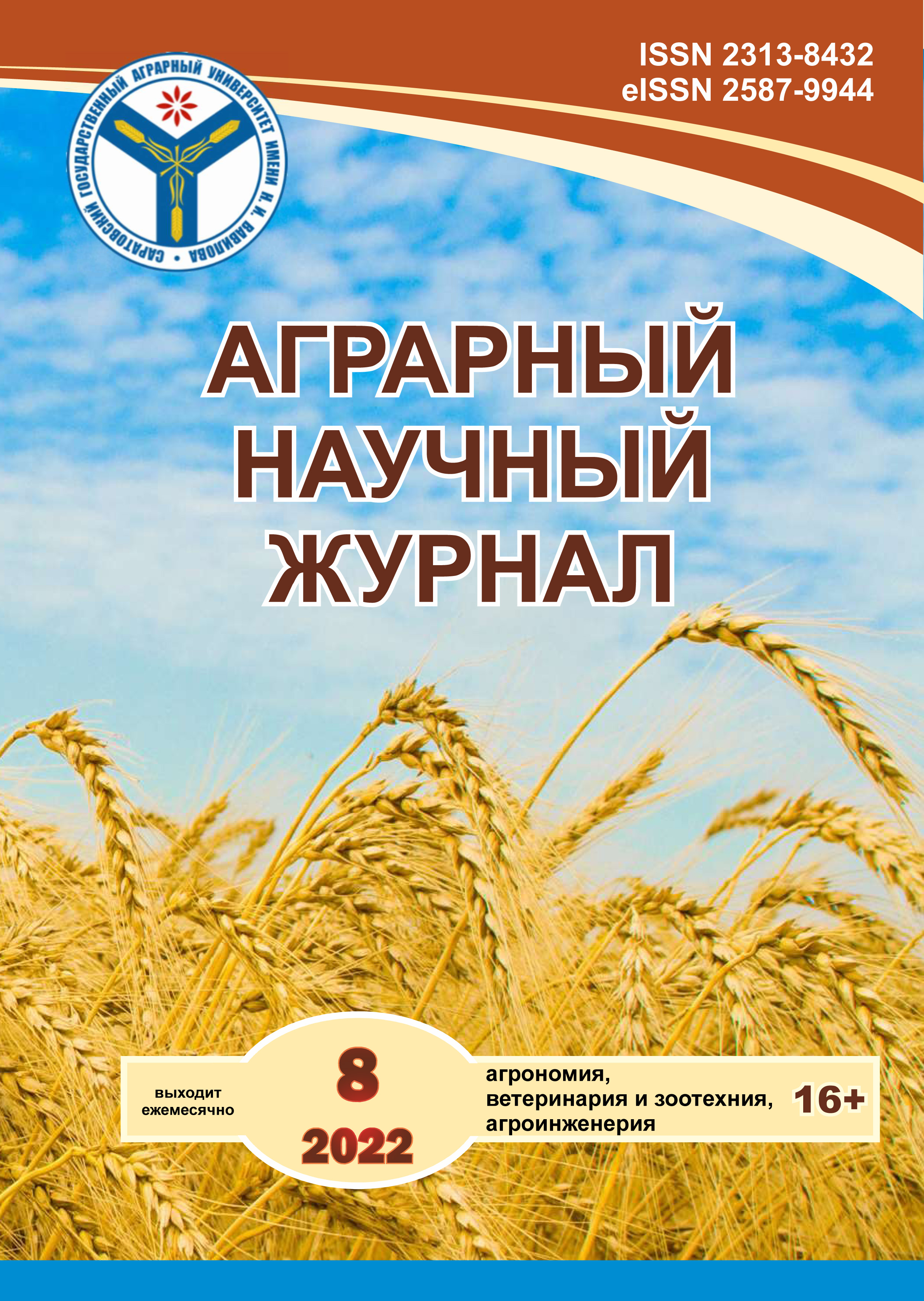Efficiency of the use of chemical preservatives in the process of dew-retting when growing fiber flax
DOI:
https://doi.org/10.28983/asj.y2022i8pp33-38Keywords:
fiber flax, chemical preservatives, retted stalks, fiber, microflora, bacteria, fungi, technological indicators of flax fiberAbstract
The influence of retted stalks treatment with solutions of copper sulfate and salicylic acid on the process of dew-retting of fiber flax, its microbiological and technological indicators was studied. It was revealed that the use of the investigated preparations allows regulating the course of microbiological processes in ripening rolls and reducing the loss of fiber flax quality. At the same time, salicylic acid treatment can be recommended in cases when it is necessary to speed up the process of retted stalks maturing and quickly organize its harvesting with minimal loss of quality. If, however, a situation has arisen when it is impossible to harvest an almost ready-made retted stalks from the field, it is recommended to restrain the reproduction of fungi on the retted stalks by treating it with a solution of copper sulfate in order to suspend the processes of further decomposition of the fibre and loss of its quality.
Downloads
References
Аврова Н. П. Консерванты и биологическая мочка льносоломы // Технические культуры. 1988. № 6. С. 16–17.
Андрушкив М. И., Старченко Л. Е., Распутенко А. С. Качественный состав микрофлоры и период росяной мочки льна-долгунца в условиях западных областей УССР // Микология и фитопатология. 1973. Т. 7. Вып. 4. С. 344–348.
Арыкова Н. С. Ежедневная динамика численности грибной флоры при проведении росяной мочки льна в контролируемых условиях // Актуальные проблемы науки в АПК: материалы 55-й Междунар. науч.-практ. конф. Кострома, 2004. Т. II. С. 14.
Арыкова Н. С. Совершенствование технологии возделывания и улучшение качества тресты льна-долгунца с учетом его сортовых особенностей в условиях Верхневолжья: автореф. дис. ... канд. с.-х. наук. Тверь, 2006. 20 с. URL: https:// new-disser.ru "_avtoreferats/01002882305.pdf.
Доспехов Б. А. Методика полевого опыта (с основами статистической обра-ботки результатов исследований). М.: Книга по требованию, 2012. 352 с.
Матаруева И. А., Арыкова Н. С. Способы воздействия на процесс формирования качества льносырья // Наука, сельское хозяйство и промышленность: пути развития и ожидаемые результаты: материалы Междунар. науч.-практ. конф. Вологда, 2008. С.155–159.
Мухин В. В., Колчин И. Т. Эффективность действия химических консервантов при длительном хранении льнотресты повышенной влажности // Селекция, семеноводство, агротехника, экономика и первичная обработка льна-долгунца: науч. тр. ВНИИльна. Торжок, 2002. С.13–17.
Савина О. В., Криштафович В. И., Байдова Н. В., Буранова Е. А. Исследование влияния препарата «Биопаг» на микробиологическое состояние и потери от болезней клубней картофеля при хранении // Хранение и переработка сельхозсырья. 2020. № 1. С. 58–69.
Сэги Й. Методы почвенной микробиологии. М.: Колос,1983. 296 с.
Highly efficient fungal pectinase and laccase producersamong isolates from flax retting liquor / W. M. Abd El-Rahim et al. // Biocatalysis and Agricultural Biotechnology. 2020. Vol. 25.
Christophe Djemiel,S?bastien Grec, Simon Hawkins Characterization of Bacterial and Fungal Community Dynamics by High-Throughput Sequencing (HTS) Metabarcoding during Flax Dew-Retting. Front. Microbiol, 2017. URL: https://doi.org/10.3389/fmicb.2017.02052.
Flax treatment with strategic enzyme combinations: Effect on chemical fiber composition and ease of fiber extraction / Jana DePrez et al. // Bio-technology Reports.2019.Vol. 23,e00358.URL: https://www.sciencedirect.com/science/article/pii/S2215017X19300670?via%3Dihub
Marcer P. C., Fraser G. W. Mikroorganisms associated with the retting of flax treated with the herbicide gluhosate // Ann. appl. 1986. Vol. 109. No. 3. P. 509.
Flax fiber: Potential for a new crop in the Southeast / J.A. Foulk et al. 2002. P. 361–370. URL: https://hort.purdue.edu/newcrop/ncnu02/pdf/foulk.pdf.
Downloads
Published
Issue
Section
License
Copyright (c) 2022 The Agrarian Scientific Journal

This work is licensed under a Creative Commons Attribution-NonCommercial 4.0 International License.








